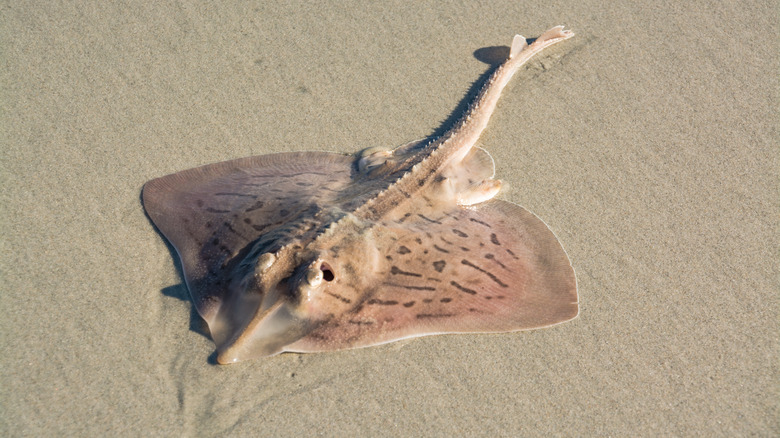Think Twice Before Swimming At This Popular California Beach
Orange County, California boasts a 42-mile coastline with stunning beaches, including Huntington Beach. Known as "Surf City USA" and considered one of the least stressed cities in the US, this mellow locale is proud of its role in bringing surfing to the mainstream in Southern California. It has hosted the US Open of Surfing every year since 1959 and houses the Huntington Beach International Surfing Museum. While it is also a prime destination for swimmers, caution is necessary due to the presence of stingrays.
Stingrays have become a concern for beachgoers in Huntington Beach. These flat sea creatures with spiny tails hide in the sand and attack using their venomous tails when someone inadvertently steps on them. In 2019, over 500 individuals were stung by stingrays in Southern California over Labor Day weekend, and 176 individuals were injured in one day in October of the same year at Huntington Beach. Stingrays are most active in the summer when the temperature of the ocean water is relatively warm and the tides are low, making shallow waters an ideal habitat for them.
Although Huntington Beach is not among the most dangerous beaches in California, the city has devised a solution to warn swimmers about the presence of stingrays.
How to minimize your chance of stingray injuries at Huntington Beach
Partially in response to the high number of stingray injuries at Huntington Beach, the city launched Safe Beach Day in 2022. This website rates stingray activity on a low-to-high scale based on real-time information. It also provides swimmers and surfers with wave height and strength. However, the website cautions that a low amount of stingray activity doesn't mean there are no stingrays in the water or no danger.
While it's unlikely for stingray injuries to be fatal, they are still painful. "You can actually feel it moving up your leg," Zach Merson from the Shark Lab at California State University, Long Beach, shared with ABC 7 while describing what a sting feels like. "It's like a burning pain that starts at the puncture site and just kind of works its way up."
If you plan to swim at Huntington Beach, check Safe Beach Day to assess the situation. Experts also recommend shuffling your feet in the ocean to ward off any nearby stingrays. If you do get stung, head to a lifeguard tower. The lifeguards will likely have you place your foot in hot water. The heat helps to break down the venom found in the stingray's tail. In any case, seeking medical attention after a stingray injury is best for proper wound care.

